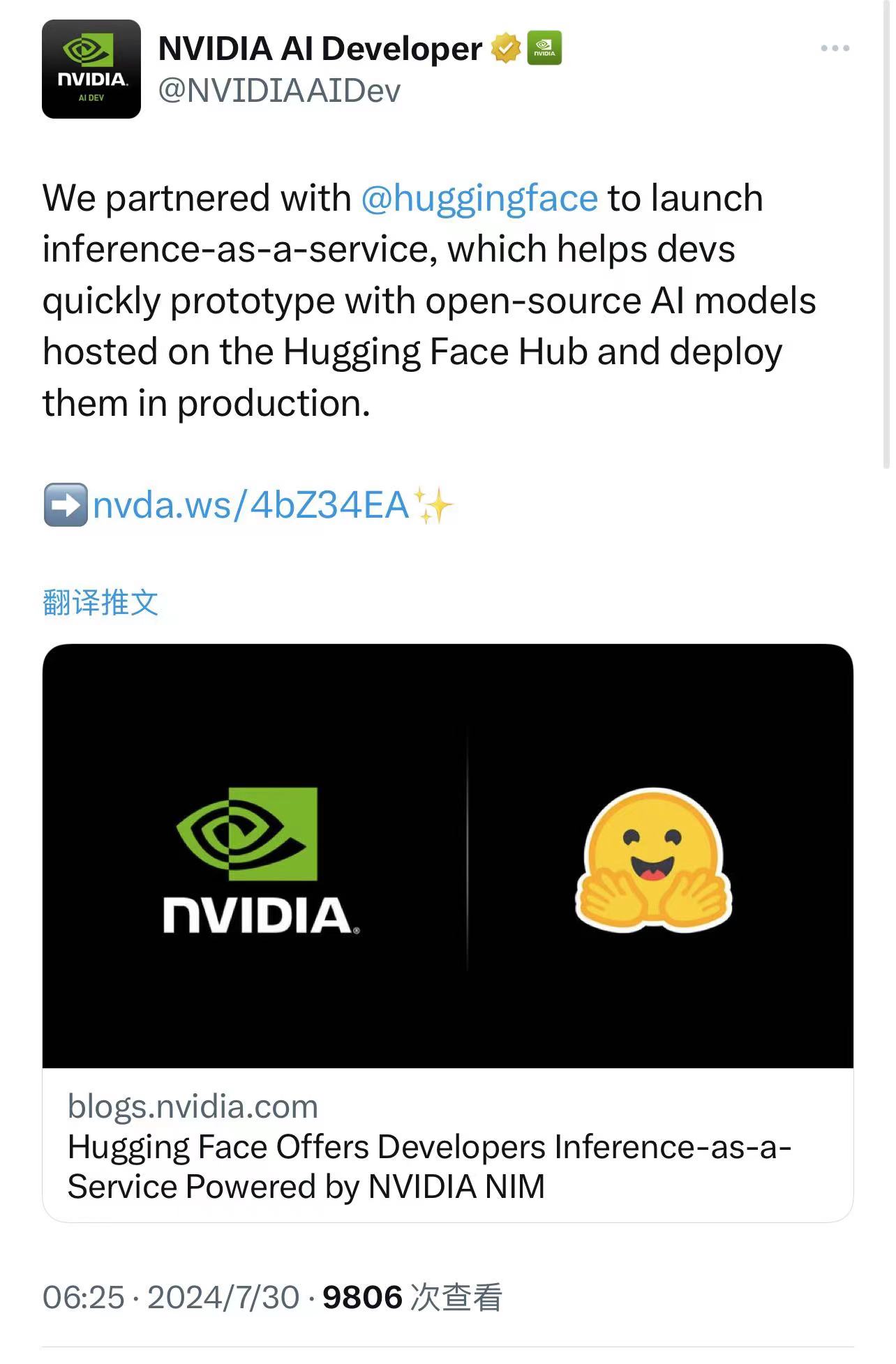

At SIGGRAPH 2024, NVIDIA showcased a series of new tools and technologies. NVIDIA CEO Jensen Huang announced that the company has sent out samples of its Blackwell architecture, a new chip architecture released earlier this year. Additionally, NVIDIA unveiled a range of software updates, particularly the Nvidia Inference Microservice (NIM), designed to optimize AI inference. This update aims to simplify and accelerate the deployment of AI models across cloud, data centers, and GPU-accelerated workstations.

NIM supports various AI applications, including large language models (LLM), visual language models (VLM), and models for speech, image, video, 3D, drug discovery, and medical imaging. Developers can test new generative AI models using NVIDIA-hosted cloud APIs or download NIM for self-hosting, enabling rapid deployment on major cloud providers or on-premises via Kubernetes, thereby reducing development time, complexity, and costs.
The update also expands the NIM inference microservices library to include advanced visual modeling and various vertical applications. For example, 3D image generators from Getty Images and Shutterstock will soon be available, utilizing NVIDIA’s Nvidia Edify multimodal architecture. Furthermore, NVIDIA has partnered with Hugging Face to offer inference as a service, helping developers quickly prototype using open-source AI models from the Hugging Face Hub and deploy them into production.
NVIDIA also introduced fVDB, a deep learning framework designed for sparse, large-scale, and high-performance spatial intelligence. Built on OpenVDB, fVDB offers four times the spatial scale of previous frameworks, a 3.5x performance increase, and access to extensive real-world datasets. fVDB simplifies the integration of multiple deep learning libraries' functionalities.
Additionally, NVIDIA launched Isaac Lab, an open-source modular framework for robotic learning, addressing the limitations of traditional training methods for robotic skills. Isaac Lab provides modular high-fidelity simulations, supporting imitation learning and reinforcement learning, offering robotic manufacturers flexible training methods to add or update robot skills based on evolving business needs.
NVIDIA also introduced VIA microservices, supporting voice, translation, vision, and lifelike animation and behaviors. VIA microservices integrate with NIM, allowing users to flexibly use any LLM or VLM model from NVIDIA’s model preview API and downloadable NIM microservices API catalog. VIA microservices are an extension of NVIDIA Metropolis microservices, accelerating the development of VLM and NIM-driven visual AI agents.
NVIDIA demonstrated how to build custom synthetic data generation (SDG) pipelines using NIM microservices and Omniverse Replicator to address data shortages in model training. Based on Universal Scene Description (OpenUSD) and NVIDIA RTX, developers can use these to build generative AI-supported SDG pipelines. NVIDIA also partnered with Apple to establish the OpenUSD Alliance, promoting the rapid development of high-performance models by industrial enterprises and physical AI developers.

The introduction of these new tools and technologies highlights NVIDIA's latest advancements in AI and computer graphics technology, providing developers and businesses with more robust support.
GENIUNEIC is an electronic component supplier with 20 years experience and excellent reputation. Our main task is to provide customers with high-quality electronic components and assist them in manufacturing high-quality products.
We specialize in: 5G communication technology, electrical automation, automotive electronics, rail transit, smart healthcare, optoelectronics industry, new energy, etc.


